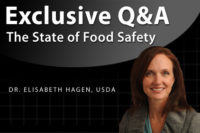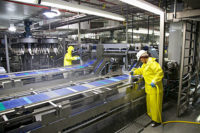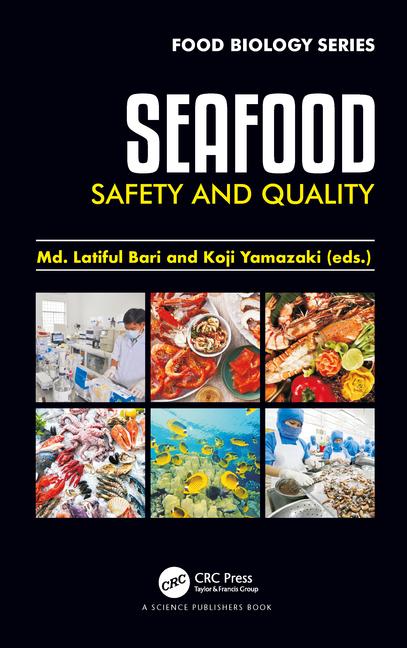Food Safety Q&A
with Carol Tucker Foreman, Distinguished Fellow,The Food Policy Institute, Consumer Federation of America.
With 2007 registering as a very busy year in terms of protein-product recalls, and more recalls having cropped up in the first quarter of 2008, The National Provisioner approached Carol Tucker Foreman of the Consumer Federation of America to get her opinions on the meat industry’s efforts in food-safety initiatives.
The National Provisioner: On a scale of 1-10, where would you say the meat- and poultry-processing industries are as a whole in terms of food safety? What can help the industry boost that number?
Carol Tucker Foreman: It is very hard to speak about the “industry” as a whole. There are approximately 6,000 plants under inspection with hundreds of different processes to make thousands of different products. Over half of the plants have fewer than 10 employees while others employ hundreds of people.
I do believe that all of the companies in the industry understand the need to control pathogens. Some have invested substantial amounts of time, energy and money in doing that. Some have been exceptionally creative in finding ways to stay ahead of the pathogen count. Others do whatever FSIS requires of them, sometime grudgingly. Some companies that produce raw products give the impression that they do not accept responsibility for controlling pathogens. They absolve themselves of responsibility by stating that only cooking to well done will resolve the problem. Cooking, they believe, is the consumer’s responsibility.
We want FSIS to be more vigorous in pushing the laggard companies to fix their problems or get out of business.
NP: What do you believe to be the biggest threat to food safety in the meat and poultry industries today, from the consumers’ perspective?
Tucker Foreman: The data connecting foodborne illness to individual food products is primitive and incomplete, so it is hard to know. However, E. coli O157:H7 is so virulent that it remains a serious threat. Other non-E. coli shiga toxin pathogens seem to be an increasing source of foodborne illness. Campylobacter is the most common cause of gastrointestinal illness in the U.S. According to the Centers for Disease Control and Prevention, the U.S. has made virtually no progress in reducing the incidence of campylobacteriosis since 2001. Most Campylobacter illnesses are traced to poultry.
Listeria-related illnesses occur rarely but are more virulent than E. coli O157:H7. The hospitalization and death rates are higher than other pathogens associated with meat and poultry. Finally, it appears that antibiotic resistant Salmonella strains are becoming a more frequent cause of serious illness.
NP: Over the past year, there have been a lot of recalls of meat and poultry products across the country — more than in previous years. To what do you attribute this higher incidence? Greater awareness on the public’s part? Overabundant media coverage? Higher standards?
Tucker Foreman: It would be a mistake for anyone in the industry to believe that the increase in recalls is a creation of either greater public awareness or the result of too much media attention. Trying to dismiss this problem in that way would be self-deluding and irresponsible.
I don’t think anyone knows the full answer, but here are some possibilities. The E. coli O157:H7 outbreaks related to produce are just one indication that on-farm practices influence food safety.
While beef slaughter and processing operations have invested to reduceE. coli contamination, there is no obligation for those who raise cattle to do so. I think it is essential to start control earlier. We need, at a minimum, vaccines that will prevent cattle from shedding E. coli O157:H7 and other STEC organisms. It appears that such a vaccine is on the way to being approved by USDA.
NP: Are the problems with food safety currently something the government must solve, or is it up to processors individually? What can consumer groups do to assist in the solution?
Tucker Foreman: According to the CDC, foodborne illness traced to the most common pathogens declined substantially between 1996 and 2000. Since then progress has been limited, and E. coli O157:H7 increased the last couple of years. Government must set goals for acceptable levels of foodborne illness and establish standards necessary to reach the goal. Government standards tend to be a floor — the minimum acceptable. Many companies insist on higher standards.
Jack in the Box, McDonald’s, Costco and other companies have established purchase specifications that are far more stringent than federal requirements. Eldon Roth of Beef Products, Inc., who just won the Beef Industry Vision Award, has been extraordinarily creative in developing ways to protect consumers from pathogens in meat. Consumers should be able to get access to information about which companies are going beyondgovernment regulations.
NP: What are your thoughts on country-of-origin labeling and traceability for meat and protein products? Do you think it will help consumers or create more confusion on already-crowded product labels?
Tucker Foreman: Consumer information on the label is good for consumers and for companies. President Kennedy articulated the “Consumer Bill of Rights” in 1962. The “right to be informed,” to have access to relevant information was among those rights. Consumer advocates — and American consumers — believe we have an inherent right to basic information about the food products we purchase and feed our families. In the 1970s, the food industry opposed nutrition labeling. Every study done has shown that consumers use the nutrition information provided on the package. Now companies have found nutrition labeling is a good way to sell their products.
Today, more and more consumers want other information that they consider relevant. They want to know where a product originated, how it was produced, whether the workers producing it were treated decently and whether good environmental practices were followed. They want to spend their food dollars in a way that advances their values. This is the free market at work. The company that spends the money and effort to offer a product that goes beyond government safety requirements or adopts environmentally friendly practices should be able to use that claim to attract buyers. It is just another form of competition.




Report Abusive Comment